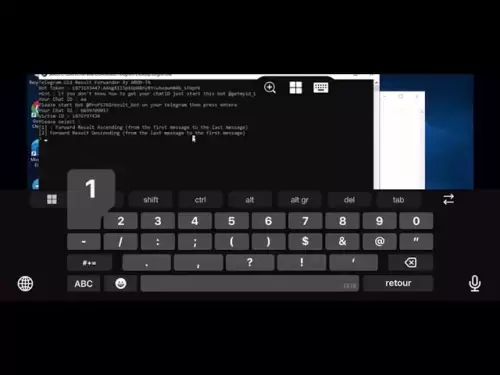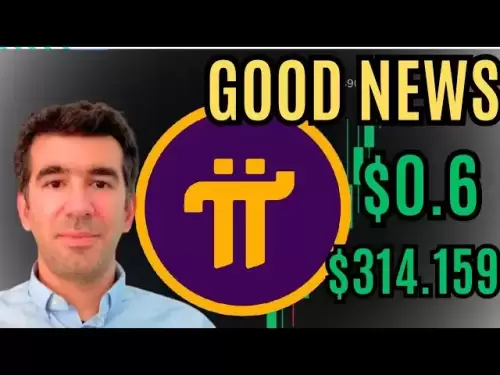-
 Bitcoin
Bitcoin $107,232.8340
-2.15% -
 Ethereum
Ethereum $2,632.5336
-1.47% -
 Tether USDt
Tether USDt $1.0003
0.00% -
 XRP
XRP $2.2537
-3.34% -
 BNB
BNB $687.0370
-0.24% -
 Solana
Solana $170.7417
-4.13% -
 USDC
USDC $0.9997
-0.01% -
 Dogecoin
Dogecoin $0.2190
-3.93% -
 Cardano
Cardano $0.7387
-3.48% -
 TRON
TRON $0.2747
-0.80% -
 Sui
Sui $3.5585
-3.72% -
 Hyperliquid
Hyperliquid $33.1594
-9.78% -
 Chainlink
Chainlink $15.4583
-3.36% -
 Avalanche
Avalanche $23.0833
-2.02% -
 Stellar
Stellar $0.2808
-2.93% -
 Toncoin
Toncoin $3.4299
13.52% -
 UNUS SED LEO
UNUS SED LEO $9.0774
1.43% -
 Shiba Inu
Shiba Inu $0.0...01408
-3.16% -
 Bitcoin Cash
Bitcoin Cash $408.3387
-2.23% -
 Hedera
Hedera $0.1829
-3.88% -
 Litecoin
Litecoin $94.4250
-2.42% -
 Polkadot
Polkadot $4.4699
-2.41% -
 Monero
Monero $350.6126
-7.74% -
 Bitget Token
Bitget Token $5.2157
-2.83% -
 Pepe
Pepe $0.0...01365
-2.66% -
 Dai
Dai $0.9998
0.00% -
 Pi
Pi $0.7239
-3.24% -
 Ethena USDe
Ethena USDe $1.0007
0.01% -
 Uniswap
Uniswap $6.6326
2.37% -
 Aave
Aave $260.9552
-4.58%
How to use Bollinger Bands in trending markets? How to avoid reverse operations?
In trending markets, use Bollinger Bands to enter long positions when price rebounds to the middle band and exits when it breaks the lower band or fails to reach the upper band.
May 26, 2025 at 11:14 am
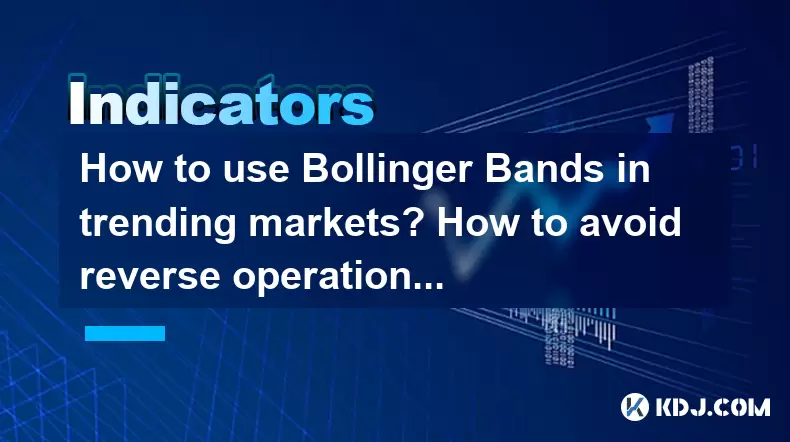
How to Use Bollinger Bands in Trending Markets? How to Avoid Reverse Operations?
Understanding Bollinger Bands
Bollinger Bands are a versatile technical analysis tool invented by John Bollinger in the 1980s. They consist of a middle band being a simple moving average (SMA) and two outer bands that are standard deviations away from the middle band. The standard settings for Bollinger Bands are a 20-day SMA for the middle band and two standard deviations for the outer bands. These bands expand and contract based on the volatility of the market, making them particularly useful in identifying overbought and oversold conditions, as well as potential trend continuations or reversals.
Identifying Trends with Bollinger Bands
In trending markets, Bollinger Bands can help traders identify the strength and direction of the trend. When the price consistently touches or breaks the upper Bollinger Band, it suggests a strong uptrend. Conversely, if the price frequently touches or breaks the lower Bollinger Band, it indicates a strong downtrend. Traders should look for the price to remain outside the bands for extended periods during strong trends. This behavior confirms the trend's strength and can help traders make informed decisions about entering or exiting positions.
Using Bollinger Bands for Entry and Exit Points
To effectively use Bollinger Bands in trending markets, traders need to understand how to pinpoint entry and exit points. During an uptrend, consider entering a long position when the price pulls back to the middle band and then starts to move upwards again. This indicates that the trend is likely to continue. For exiting a long position, consider selling when the price breaks below the lower Bollinger Band or when it fails to reach the upper band on subsequent rallies. Similarly, in a downtrend, consider entering a short position when the price rallies to the middle band and then starts to move downwards again. For exiting a short position, consider covering when the price breaks above the upper Bollinger Band or when it fails to reach the lower band on subsequent declines.
Avoiding Reverse Operations with Bollinger Bands
Reverse operations, or trading against the trend, can be risky and lead to significant losses. To avoid these, traders should focus on the following strategies:
- Confirm the Trend: Before entering any trade, ensure that the market is in a clear trend. Look for consistent price action that respects the Bollinger Bands and other trend indicators such as moving averages or trend lines.
- Avoid Trading Against the Trend: Do not initiate trades that go against the prevailing trend. If the price is consistently touching or breaking the upper Bollinger Band, avoid shorting the market. Similarly, if the price is consistently touching or breaking the lower Bollinger Band, avoid buying the market.
- Use Additional Indicators: Bollinger Bands should not be used in isolation. Combine them with other indicators such as the Relative Strength Index (RSI) or the Moving Average Convergence Divergence (MACD) to confirm trend strength and potential reversal signals. This can help reduce the likelihood of entering reverse trades.
- Set Stop-Loss Orders: Always use stop-loss orders to limit potential losses. Place stop-loss orders just outside the Bollinger Bands to protect against sudden reversals. This can help prevent significant losses if the market moves against your position.
Combining Bollinger Bands with Other Technical Indicators
To enhance the effectiveness of Bollinger Bands in trending markets, traders often combine them with other technical indicators. The RSI is particularly useful for identifying overbought and oversold conditions. When the RSI is above 70 and the price is touching the upper Bollinger Band, it may indicate an overbought condition and a potential pullback. Conversely, when the RSI is below 30 and the price is touching the lower Bollinger Band, it may indicate an oversold condition and a potential rally. The MACD can help confirm trend strength and potential reversals. When the MACD line crosses above the signal line and the price is touching the upper Bollinger Band, it may confirm an uptrend. When the MACD line crosses below the signal line and the price is touching the lower Bollinger Band, it may confirm a downtrend.
Practical Example of Using Bollinger Bands in a Trending Market
To illustrate how to use Bollinger Bands in a trending market, let's consider a hypothetical example of a cryptocurrency in an uptrend:
- Identify the Trend: The cryptocurrency's price has been consistently touching or breaking the upper Bollinger Band over the past few weeks, indicating a strong uptrend.
- Entry Point: The price pulls back to the middle Bollinger Band and starts to move upwards again. This could be a good entry point for a long position.
- Exit Point: The price fails to reach the upper Bollinger Band on subsequent rallies and breaks below the lower Bollinger Band. This could be a signal to exit the long position.
- Avoiding Reverse Operations: During this uptrend, avoid shorting the market, as the price is consistently touching or breaking the upper Bollinger Band. Instead, focus on long positions and use stop-loss orders to protect against potential reversals.
Frequently Asked Questions
Q1: Can Bollinger Bands be used effectively in ranging markets?
A1: Yes, Bollinger Bands can be used in ranging markets to identify overbought and oversold conditions. When the price touches the upper Bollinger Band in a range, it may indicate an overbought condition and a potential pullback. Conversely, when the price touches the lower Bollinger Band, it may indicate an oversold condition and a potential rally. Traders should use additional indicators such as the RSI to confirm these conditions.
Q2: How can I adjust the settings of Bollinger Bands for different timeframes?
A2: The standard settings for Bollinger Bands are a 20-day SMA for the middle band and two standard deviations for the outer bands. For shorter timeframes, such as intraday trading, you may want to use a shorter period for the SMA, such as a 10-day or 5-day SMA, and adjust the number of standard deviations to one or 1.5. For longer timeframes, such as weekly charts, you may want to use a longer period for the SMA, such as a 50-day or 100-day SMA, and keep the number of standard deviations at two.
Q3: Are there any common pitfalls to avoid when using Bollinger Bands?
A3: One common pitfall is relying solely on Bollinger Bands without using additional indicators to confirm signals. Another pitfall is not adjusting the settings of Bollinger Bands for different market conditions and timeframes. Additionally, traders should be cautious of false breakouts, where the price briefly breaks the Bollinger Bands but then quickly reverses. Using stop-loss orders and confirming signals with other indicators can help mitigate these risks.
Q4: How can I use Bollinger Bands to identify potential breakouts?
A4: Bollinger Bands can help identify potential breakouts by signaling when the price is consolidating within a narrow range. When the bands start to contract, it may indicate that a breakout is imminent. Traders should look for the price to break above the upper Bollinger Band for a potential bullish breakout or below the lower Bollinger Band for a potential bearish breakout. Confirm these breakouts with other indicators such as volume and momentum indicators to increase the likelihood of a successful trade.
Disclaimer:info@kdj.com
The information provided is not trading advice. kdj.com does not assume any responsibility for any investments made based on the information provided in this article. Cryptocurrencies are highly volatile and it is highly recommended that you invest with caution after thorough research!
If you believe that the content used on this website infringes your copyright, please contact us immediately (info@kdj.com) and we will delete it promptly.
- Catzilla is capturing attention amid the ongoing crypto surge, sparking curiosity about its potential for remarkable growth
- 2025-05-29 05:35:14
- 3 Meme Coins With the Most Potential in 2025
- 2025-05-29 05:35:14
- Mutuum Finance (MUTM) Presale Raises Over $9.3M From 11,500+ Investors Ahead of Token Price Rise to $0.035
- 2025-05-29 05:30:13
- Unstaked (UNSD) Shifts Focus Away From Sentiment and Toward Output
- 2025-05-29 05:30:13
- Troller Cat (TCAT) Breaks Out, Pepe Charges Ahead, and Troller Cat Stage 6 Raised Over $150K—Best Cryptos to Stake Revealed
- 2025-05-29 05:25:13
- Texas Is the Next State to Establish a Strategic Bitcoin Reserve After New Hampshire
- 2025-05-29 05:25:13
Related knowledge
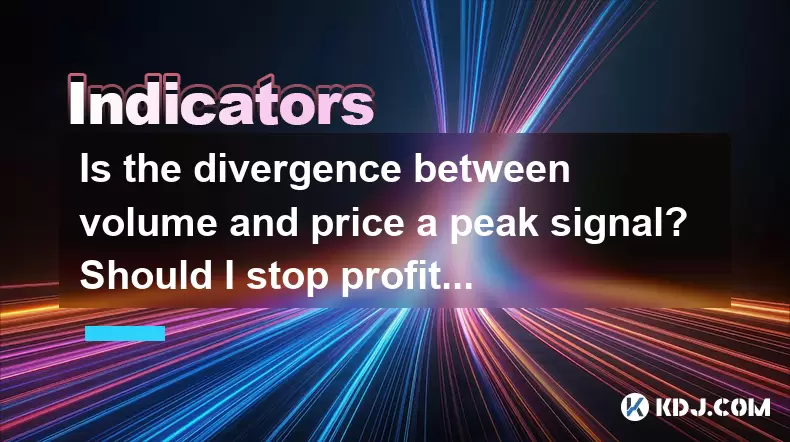
Is the divergence between volume and price a peak signal? Should I stop profit or hold?
May 29,2025 at 04:43am
Is the divergence between volume and price a peak signal? Should I stop profit or hold? In the world of cryptocurrencies, traders often look for signals that can indicate potential peaks or troughs in market trends. One such signal that traders frequently monitor is the divergence between volume and price. This phenomenon occurs when the trading volume ...
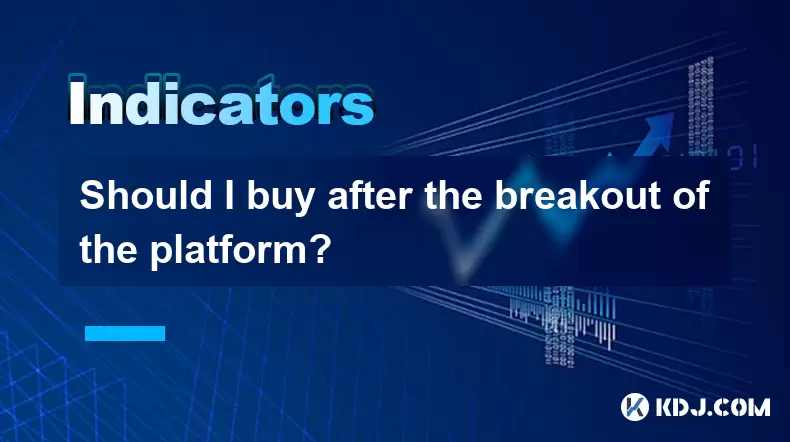
Should I buy after the breakout of the platform?
May 29,2025 at 04:35am
Understanding Breakouts in CryptocurrencyBreakouts in the cryptocurrency market occur when the price of a digital asset moves above a defined resistance level or below a support level, often leading to increased volatility and trading activity. A breakout can signal the start of a new trend, either bullish or bearish, depending on the direction of the p...
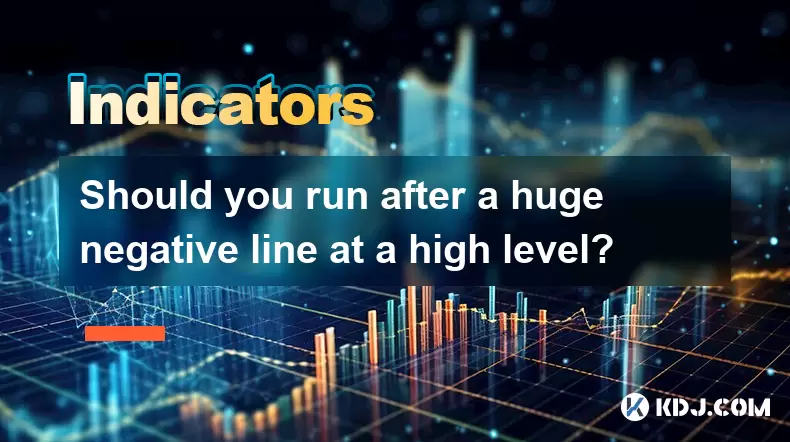
Should you run after a huge negative line at a high level?
May 29,2025 at 04:21am
Should you run after a huge negative line at a high level? When navigating the volatile world of cryptocurrencies, one of the most challenging decisions traders face is whether to chase a significant price drop after a high. A huge negative line at a high level often signals a sharp reversal in market sentiment, and understanding how to react to such mo...
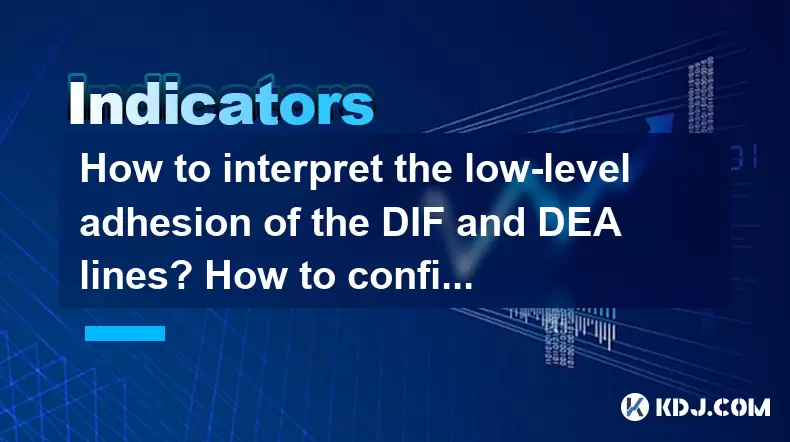
How to interpret the low-level adhesion of the DIF and DEA lines? How to confirm the direction selection signal?
May 29,2025 at 02:49am
Understanding the low-level adhesion of the DIF and DEA lines in the context of cryptocurrency trading involves delving into the specifics of the Moving Average Convergence Divergence (MACD) indicator. The MACD is a trend-following momentum indicator that shows the relationship between two moving averages of a cryptocurrency's price. The DIF line, also ...
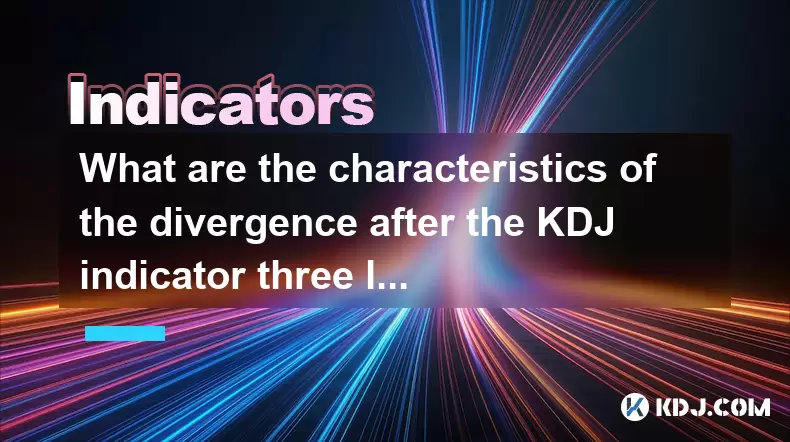
What are the characteristics of the divergence after the KDJ indicator three lines merge into one? What are the direction selection signals?
May 29,2025 at 03:14am
The KDJ indicator is a popular tool used in the cryptocurrency trading community to identify potential trend reversals and to gauge the momentum of price movements. When the three lines of the KDJ indicator—namely the K line, D line, and J line—merge into one, it often signifies a significant event in the market. This phenomenon is known as a divergence...
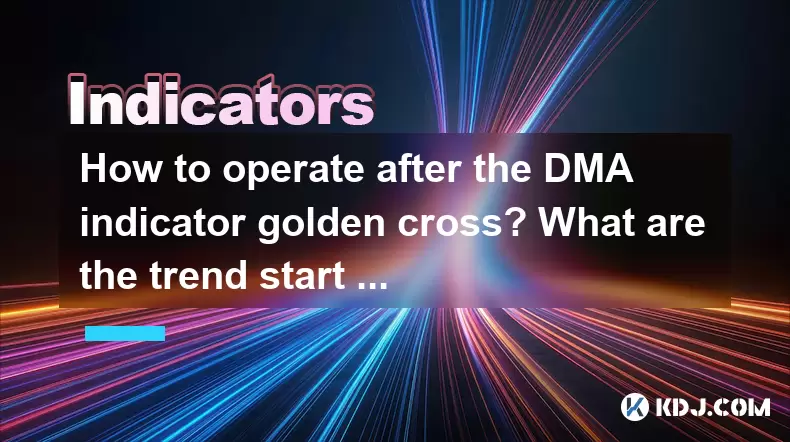
How to operate after the DMA indicator golden cross? What are the trend start signals?
May 29,2025 at 12:21am
How to Operate After the DMA Indicator Golden Cross? What Are the Trend Start Signals? The DMA (Dual Moving Average) indicator is a popular tool among cryptocurrency traders for identifying potential trend changes and entry points. A golden cross on the DMA indicator occurs when a shorter-term moving average crosses above a longer-term moving average, s...

Is the divergence between volume and price a peak signal? Should I stop profit or hold?
May 29,2025 at 04:43am
Is the divergence between volume and price a peak signal? Should I stop profit or hold? In the world of cryptocurrencies, traders often look for signals that can indicate potential peaks or troughs in market trends. One such signal that traders frequently monitor is the divergence between volume and price. This phenomenon occurs when the trading volume ...

Should I buy after the breakout of the platform?
May 29,2025 at 04:35am
Understanding Breakouts in CryptocurrencyBreakouts in the cryptocurrency market occur when the price of a digital asset moves above a defined resistance level or below a support level, often leading to increased volatility and trading activity. A breakout can signal the start of a new trend, either bullish or bearish, depending on the direction of the p...

Should you run after a huge negative line at a high level?
May 29,2025 at 04:21am
Should you run after a huge negative line at a high level? When navigating the volatile world of cryptocurrencies, one of the most challenging decisions traders face is whether to chase a significant price drop after a high. A huge negative line at a high level often signals a sharp reversal in market sentiment, and understanding how to react to such mo...

How to interpret the low-level adhesion of the DIF and DEA lines? How to confirm the direction selection signal?
May 29,2025 at 02:49am
Understanding the low-level adhesion of the DIF and DEA lines in the context of cryptocurrency trading involves delving into the specifics of the Moving Average Convergence Divergence (MACD) indicator. The MACD is a trend-following momentum indicator that shows the relationship between two moving averages of a cryptocurrency's price. The DIF line, also ...

What are the characteristics of the divergence after the KDJ indicator three lines merge into one? What are the direction selection signals?
May 29,2025 at 03:14am
The KDJ indicator is a popular tool used in the cryptocurrency trading community to identify potential trend reversals and to gauge the momentum of price movements. When the three lines of the KDJ indicator—namely the K line, D line, and J line—merge into one, it often signifies a significant event in the market. This phenomenon is known as a divergence...

How to operate after the DMA indicator golden cross? What are the trend start signals?
May 29,2025 at 12:21am
How to Operate After the DMA Indicator Golden Cross? What Are the Trend Start Signals? The DMA (Dual Moving Average) indicator is a popular tool among cryptocurrency traders for identifying potential trend changes and entry points. A golden cross on the DMA indicator occurs when a shorter-term moving average crosses above a longer-term moving average, s...
See all articles





















